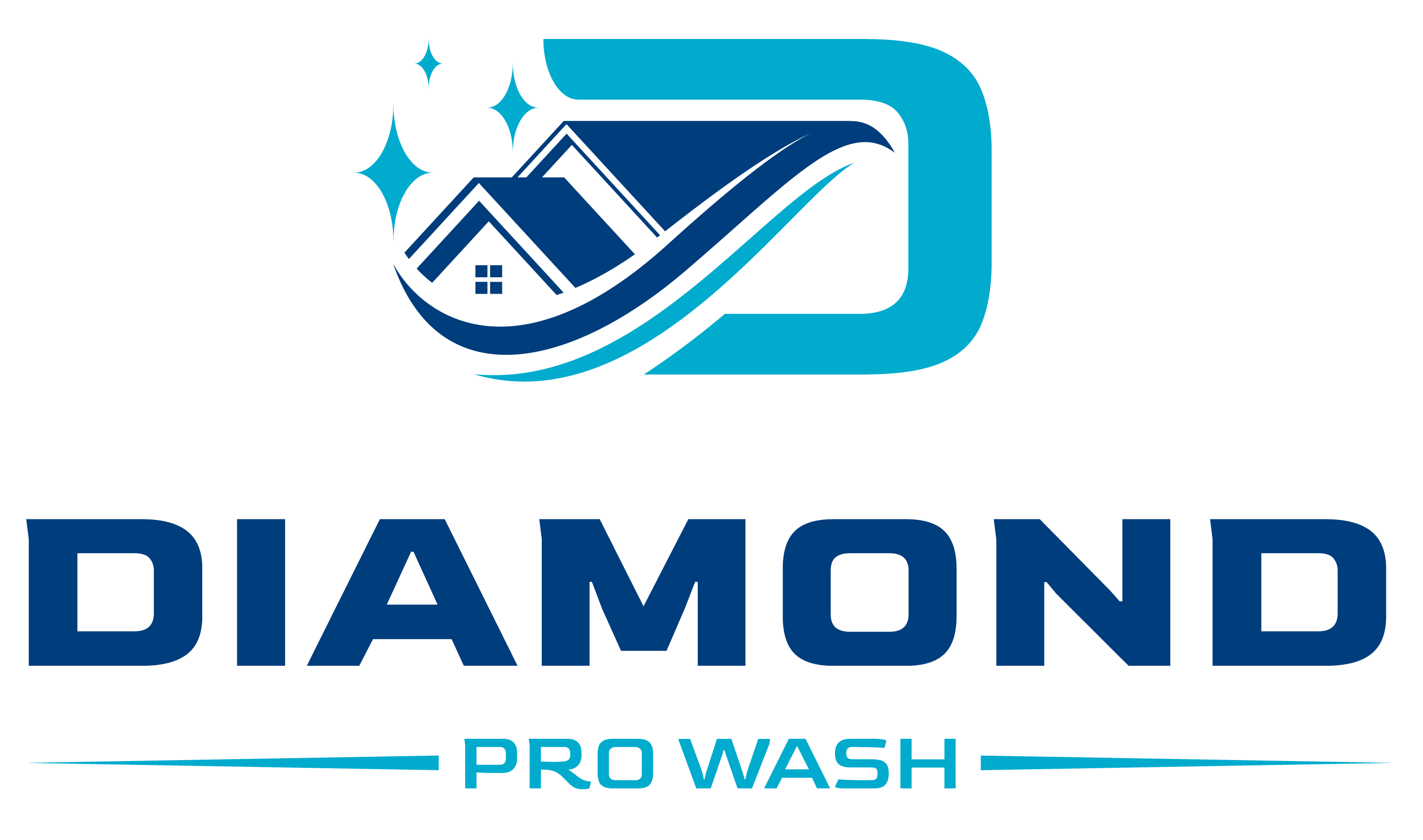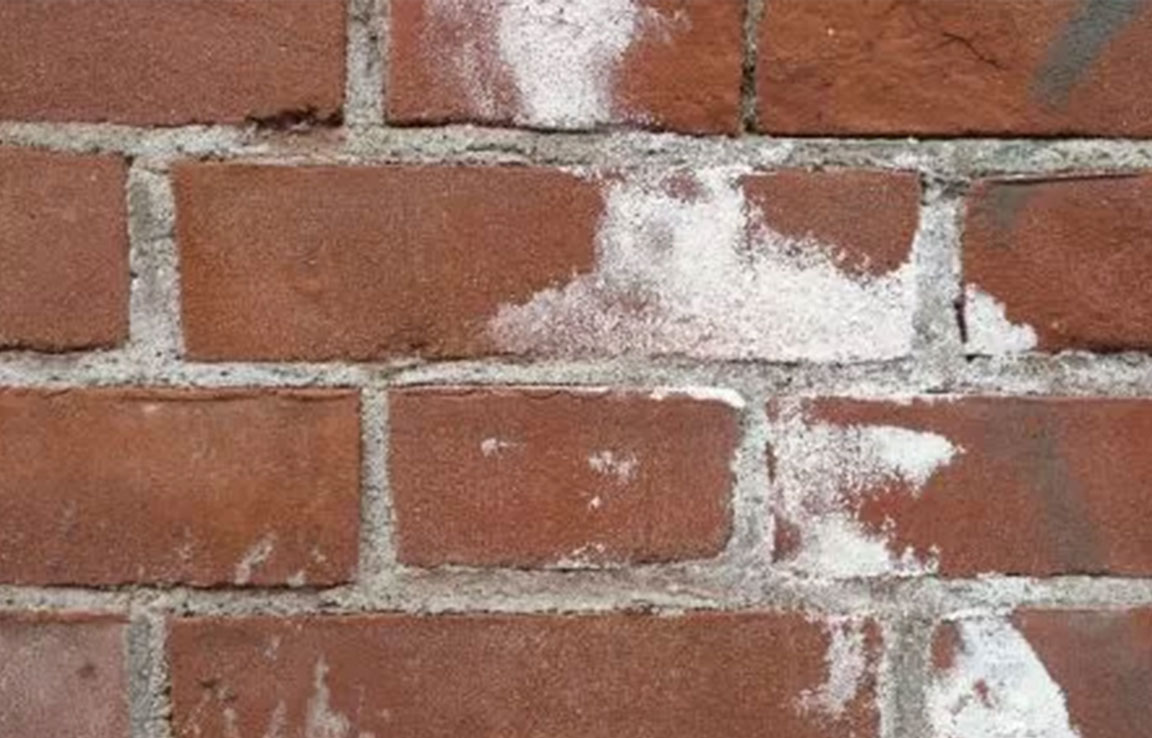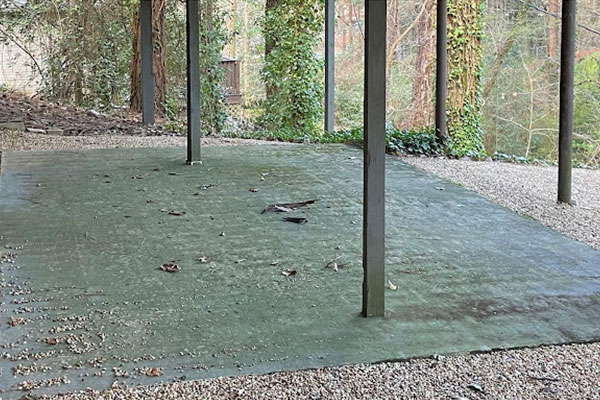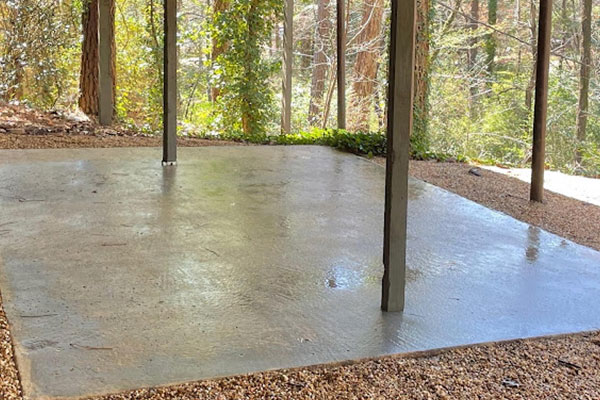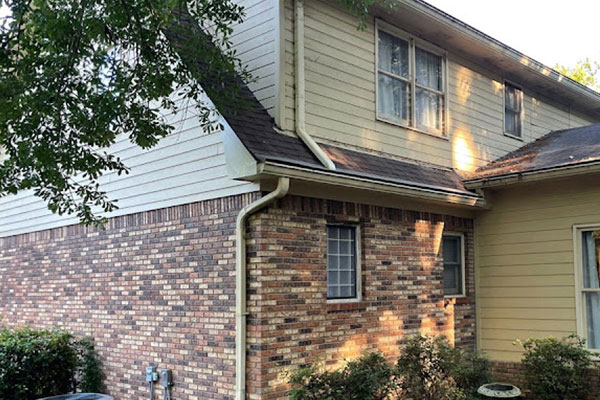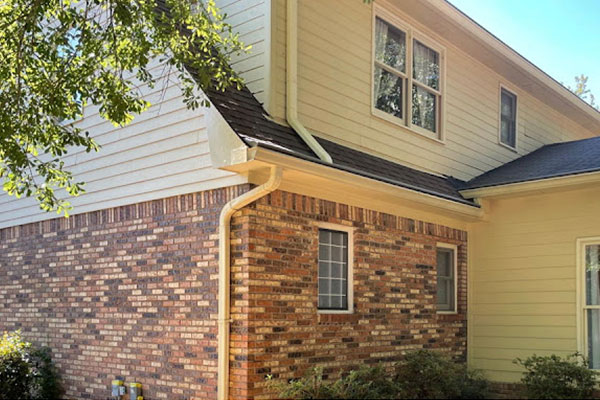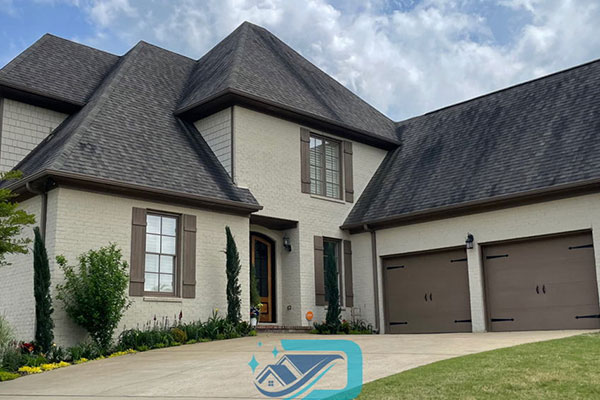As a result of water being present on, in, or on top of brick, concrete, stone, stucco or other surfaces of a building, efflorescence can form. The salt deposits remain on the surface after water evaporates and have a white or greyish tint. Efflorescence can also appear as a powdery substance on walls and floors, requiring special treatment.
What can you do to prevent efflorescence? Let’s take a closer look.
What Causes Efflorescence?
The frequency and intensity of efflorescence varies across the country based on moisture and temperature. For efflorescence to occur, three conditions must be met:
- The material contains water-soluble salts.
- For salt to become a soluble solution, moisture must be present.
- Salts evaporate moisture as they move to the surface of the material. Salts crystallize as a result, resulting in efflorescence.
Water, rain, and snow are the primary sources of moisture that impact efflorescence. Moisture generation can also be affected by condensation, groundwater wicking, and interior activities.
It is possible for efflorescence to occur at different times. In general, it can either be a problem from the beginning of a building’s construction or develop over time. When the building material is manufactured, excessive water is present, causing primary efflorescence to appear within 72 hours of use. Outside moisture pulls salt out of the building material, causing secondary efflorescence.
It is common for efflorescence to occur during the construction of a home. When masonry units are left out overnight during construction, they are likely to absorb moisture from damp soil and rain. Throughout a construction project, masonry units should be covered and stored in pallets to minimize the risk of efflorescence.
When building materials are installed incorrectly or there are problems during installation, efflorescence can also occur. Here are some examples:
- Incorrect use of through-wall flashings.
- Masonry is not ventilated sufficiently.
- Masonry that is not adequately protected from moisture.
- After installation, joint materials fail.
- Leaving materials on the ground or storing them improperly.
Efflorescence is often a seasonal problem, and humidity can affect the presence of soluble salts. There may be rain, snow, sleet, and other inclement weather conditions in the winter. Summer, fall, and spring can still experience efflorescence.
How To Spot Efflorescence?
It is important to understand the differences between efflorescence and stains. It is common for stains to come in various colors, but they may at first appear similar to efflorescence. An efflorescence is a white, powdery substance found on unsealed surfaces, such as:
- Brick: Since it is porous, brick may absorb soluble salts. Take a single brick and soak it in distilled water for approximately seven days to determine whether efflorescence will be a problem. When the brick has dried, compare it to a brick that has not been immersed. It is likely that the brick has effloresced if you notice a powdery, white material on it.
- Cement: Portland cement used in mortar and grout is a major contributor to efflorescence in these materials, according to the Brick Industry Association (BIA). Due to its high alkali content, it is more likely to effloresce than other types of cement. In contrast, it is important to note that all types of cement contain some amount of water-soluble alkalis, making any cement susceptible to efflorescence.
- Lime: Lime is a water-soluble material that produces calcium chloride when it reacts with unbuffered hydrochloric acid. Calcium chloride may surface through the materials of a building. In comparison, lime enhances the bond between mortar and brick and makes masonry materials more resistant to water.
- Sand: Sand is used in grout and mortar and isn’t water-soluble. On the other hand, other materials can contaminate sand, which ends up contributing to efflorescence. It’s best to use sand that has been cleaned and is contamination-free when building to minimize the chance of efflorescence.
- Clay: Building brick and face brick consist of clay, which contains salts that are highly soluble. Building salts, such as calcium sulfate, may react with clay to cause efflorescence.
- Admixtures: An admixture’s bond and strength can increase the possibility of efflorescence with building material. In general, it’s best to err on the side of caution when it comes to admixtures. Consider avoiding this solution entirely if you can’t determine what the admixture consists of.
- Backings: Concrete and other backing materials may contain soluble salts, contributing to the efflorescence of brickwork. Salts may dissolve in backings if enough water is present, causing them to effloresce.
Efflorescence can occur on any building material that comes into contact with the ground. However, if you understand the root causes of efflorescence, you can choose the right building materials to prevent this problem.
Efflorescing salts are associated with a number of building materials, including:
- Calcium sulfate: An efflorescing salt source commonly found in brick
- Sodium sulfate: Often seen in cement-brick reactions
- Potassium sulfate: Noticeable in many cement-brick reactions
- Calcium carbonate: May be discovered in mortar or concrete backing
- Sodium carbonate: Frequently seen in mortar
- Potassium carbonate: Like sodium carbonate, commonly found in mortar
- Vanadyl sulfate: Usually found in brick
- Manganese oxide: Often present in brick
A building project’s success depends on choosing the right building materials. You should be able to minimize this problem if you understand the impact of efflorescence on various building materials.
What Is Efflorescence On Pavers And Other Materials Indicative Of?
In French, efflorescence means “flowering out.” If you fail to control efflorescence properly, the problem can spread quickly.
A porous building material, such as concrete, pavers, or stucco, can absorb water and draw salts to it. According to the International Association of Certified Home Inspectors (InterNACHI), porous building materials can absorb or wick moisture over a six-mile span, just as trees carry water through their roots to their leaves. The process is known as capillary action. It is possible for efflorescence to indicate a moisture issue that could potentially damage the structure if it occurs.
Water will evaporate when it reaches the surface of a building material. Salt is left behind after water evaporates, but water absorption and wicking continue. As a result, osmosis occurs because of the high salt concentration. Water moves toward salt during osmosis to reduce its concentration, causing large hydrostatic pressures within porous building materials. Due to these pressures, the material can be damaged or destroyed.
According to InterNACHI, osmosis can cause pressures up to 3,000 psi, exceeding concrete’s structural strength. Therefore, osmosis can cause porous building materials to crack, flake, or crumble. In addition to spalling, osmosis can also cause the separation of building materials due to hydrostatic pressure.
In the end, efflorescence itself isn’t dangerous. It may, however, cause structural damage to building materials due to moisture problems. It’s important to act if you discover efflorescence in the basement or on concrete and other structures.
Preventing Efflorescence
Building materials should be maintained before, during, and after construction to prevent efflorescence. Consider taking some precautions to keep a building in good condition. Efflorescence can be prevented in a variety of ways, including:
- Hydrophobic sealant: Applying an impregnating hydrophobic sealant to a building material’s surface can prevent the absorption of water. The sealant also will stop water from traveling within a building material.
- Capillary breaks: Installing capillary breaks such as polyethylene sheeting between building material and soil can minimize the risk of salt entering the material.
- Quality masonry construction: Implementing overhanging copings, eaves and flashings will minimize the risk of water entering a wall.
- Increased emphasis on landscaping and sprinklers: Paying special attention to landscaping and sprinklers will ensure you can prevent water from reaching porous building materials.
- Installing grout with mechanical vibration: Consolidating grout with mechanical vibration will limit the chance of voids in the grout.
- Using dense tooled mortar joints: Leveraging dense tooled mortar joints reduces the porous nature of a wall, making it tough for salts to migrate through it.
- Utilizing grout admixtures: Grout admixtures, such as chemical additives that are designed to improve the flow of a grout mix and reduce its water content simultaneously, may reduce voids in the grout.
- Storing masonry materials properly: Keeping masonry materials off the ground and covering them with waterproof materials can protect these materials against groundwater and precipitation.
While there are several things you can do to try and prevent efflorescence from occurring, it’s still always a possibility. Therefore it’s also important to understand how to troubleshoot and clean efflorescence if it does occur.
Ways To Troubleshoot Efflorescence?
Whenever efflorescence occurs, it’s important to be able to troubleshoot and assess the possible cause. Identifying the problem will help you determine the best course of action. When efflorescence is detected on a building, consider the following:
- Assess the affected structure’s age: When did the efflorescence first appear on the structure? It is likely that the efflorescence is caused by the building materials themselves and/or water that entered the structure during construction if the structure is less than a year old. Alternatively, if the structure is over a year old, you should inspect it closely for leaks. As a result of a new source of water in the building material, efflorescence can occur.
- By observing the location of the efflorescence, you may be able to determine the source of the problem. When determining where the moisture came from, you should also consider how the building was used recently. Various conditions may have contributed to efflorescence if a building has been vacant for several months.
- Efflorescence may be caused by cracks or other defects in the building material. Examine the condition of the building materials and the quality of the workmanship to identify any entry points for moisture.
- Analyze the building’s construction to identify moisture travel paths and sources of contamination by soluble salts. Pay attention to the junction between the roof and the wall, as well as to the flashing. You can use this review to determine the severity of the problem and potential solutions.
- Collect laboratory reports: To determine if soluble salts are present in the building materials and the area, you should review laboratory test reports. As a result of these reports, you may be able to identify efflorescence and other potential building problems.
- Condensation within a wall, leaky pipes, and faulty drains are some of the most common water sources that can lead to efflorescence. Consider conducting an extensive condensation analysis to identify all potential efflorescence sources.
Investing time and resources in preventing efflorescence can make a huge difference. You can reduce or eliminate the costs and time associated with removing efflorescence by doing this.
How To Remove Efflorescence?
There are some efflorescence remover techniques and home remedies you can try. It is possible to remove efflorescence quickly and easily. As efflorescing salts are water-soluble, they may disappear naturally with normal weathering. Efflorescence can be removed in several ways, including:
- It may be possible to dissolve efflorescence quickly by applying pressurized water. After applying water to a building material, dry it off. Crystals may remain if the water is not removed, causing efflorescence to return.
- Diluted vinegar: If you’re in a pinch, household diluted white vinegar can be used on efflorescence. It’s less harmful than industrial chemicals and you most likely already have vinegar in your kitchen.
- Brushing: With a strong brush, you can remove efflorescence with ease.
To clean efflorescence off brick, it is crucial to complete this task in warm, dry weather. At this point, moisture may bring additional salts to the surface of brick, and the salts can be removed by dry brushing.
You may also be able to remove efflorescence with clear water repellents, silicone coatings, and acrylic coatings. Water will be absorbed across masonry surfaces, preventing efflorescence from recurring. In addition, warm water and white wine vinegar have been shown to eliminate efflorescence.
Efflorescence Cleaners are essential to use before applying any sealant because they clean deeply and effectively. To apply a coating correctly, you’ll want to use the following three-step process:
- Rinse the building surface: Rinse the building surface with water. If the surface is outdoors, you can use a hose to spray down the surface. Or, if the surface is indoors, you can use a spray bottle filled with water to rinse the surface thoroughly.
- Apply the cleaning solution: Spray the cleaning solution onto the building surface and allow it to sit for several minutes. If necessary, you may need to apply multiple coats of the cleaning solution to the surface for optimal results.
- Rinse the building surface again: Rinse the building surface with water one last time. Then, use a fresh, dry cloth to clean the surface. Ensure the surface is dry to minimize the risk of ongoing efflorescence.
Apply coatings roughly 1/8 in. to 1/4 in. below the surface of the building material. This will prevent water from evaporating and passing through the treated area as vapor and soluble salts.
Contact Diamond Pro Wash today if you are looking to remove efflorescence!
